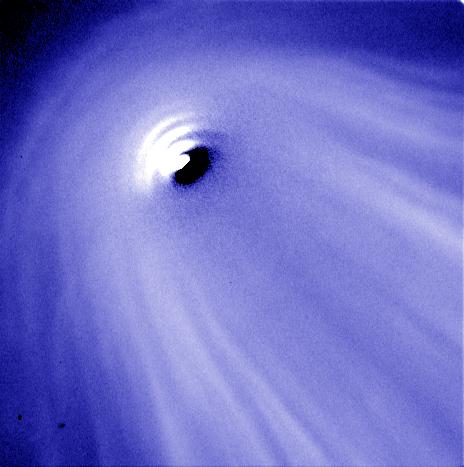|
The motion of Hale-Bopp's ionized OH is documented in this serial exposure. Seventeen exposures,
each 4 minutes long, have been taken over a time range of 80 minutes. In the above movie this
sequence is shown as a loop. The used filter bandpass lies in the near UV at 360 nm
|
and enabled us to observe the OH+ line emission.
The continuum radiation of the sunlight,
that is scattered by the cometary dust, is subtracted from all images.
The image scale at the comet is 460000 km one axis.
|
|
The plasma motion is driven by the solar wind and the interplanetary magnetic field carried along with it.
The observations show, that the ionic structures already exist in front of the cometary nucleus.
The further motion is folding these structures around the nucleus. In this way the so called 'tail rays'
are created.
|
In a similar way the interplanetary magnetic field lines are caught
up by the cometary ionosphere and draped around the nucleus into a magnetic tail.
But the tailrays are unlikely to visualize the magnetic field lines and
their nature is not clear yet and still under debate.
|

